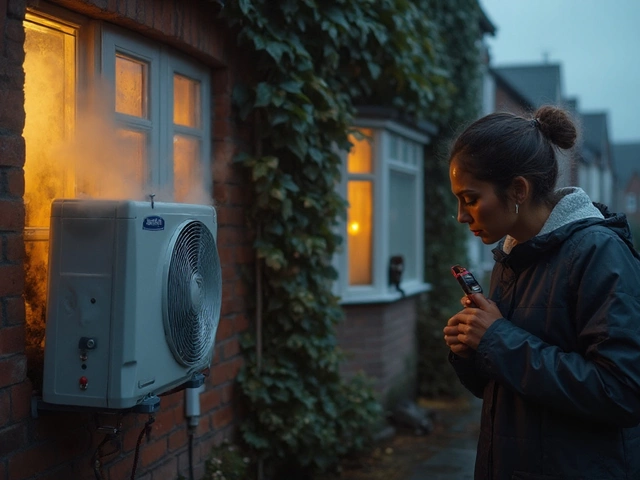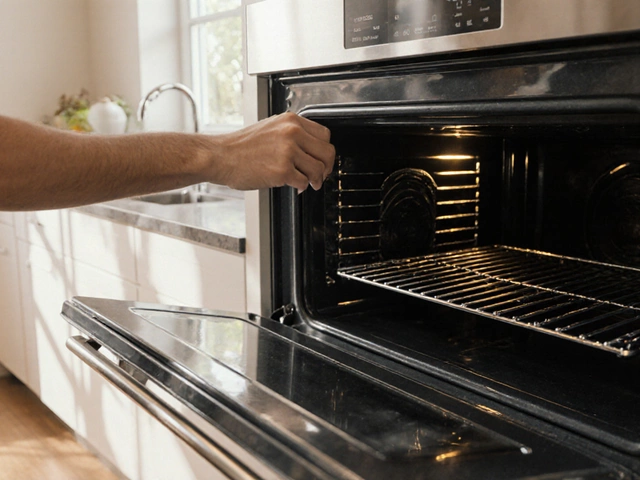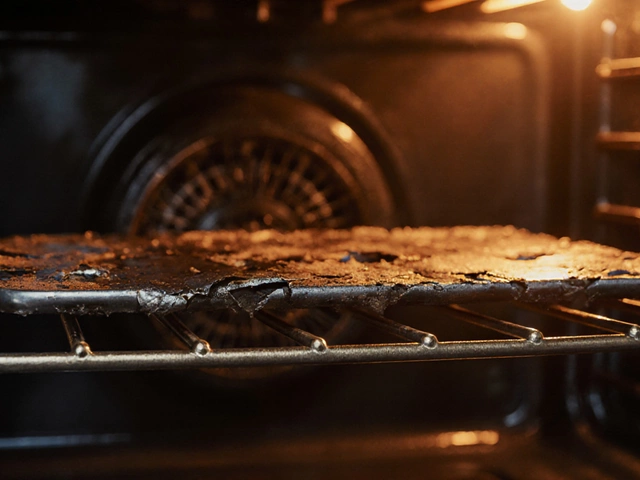Bakers have faced that heart-stopping moment when your oven just stops working with a batch of cookies already in. It’s a classic household nightmare. Ovens seem intimidating—with all their heat, wires, and maybe even gas lines. So, are ovens easy to fix, or are they a total black box? You’d be surprised by how approachable a lot of oven repairs actually are, even for someone who doesn’t consider themselves “handy.” Messing with your oven can feel risky, but understanding the basics turns that anxiety into confidence. If you have a screwdriver, some patience, and a bit of know-how, there’s a lot you can tackle solo—without even putting your safety at risk.
Common Oven Problems Most People Can Fix
The most frequent oven issues aren’t as complex as they sound when you first search them online. Take, for example, an oven not heating up. While it seems like some huge, expensive problem, it’s often down to a broken heating element—especially in electric ovens. These elements are usually right at the bottom (bake) or the top (broil) and they can burn out with time. If only one function doesn’t work (say broil still browns your pizza but bake won’t budge), it’s probably the culprit. Swapping out a bad element is usually just a matter of turning off power, unscrewing the old one, unplugging a couple of wire connectors, plugging in the new part, and reversing the steps. The cost for the part rarely crosses $40 for most standard ovens.
Another headache: oven doors that won’t close all the way, causing heat to leak out and food to cook unevenly. More often than not, the hinges have bent or warped, or the gasket seal’s fallen apart. Both are cheap and straightforward fixes—pop the door off the hinges, check for visible damage, and swap in a replacement hinge or a new gasket, which you can order online with your model number.
If you’re staring at an oven that’s dead—no lights, no clock, nothing—the chances are high it’s a fuse or the power source. First, check your breaker box. People sometimes forget these larger appliances run off a dedicated circuit, and that can trip in a thunderstorm or if you’ve overloaded your kitchen’s sockets. If that doesn’t bring your oven back to life, some models have an internal thermal fuse that can pop if the oven overheats (like when cleaning). Locating and changing one is similar to swapping out an element: unplug the oven, look behind the back panel, and you’ll likely see a small cylindrical fuse. Just make sure to buy the right amp rating.
Strange smells, excess smoke, or uneven heating are other complaints. These are often cleaning issues or signs there’s residue on a sensor or element. A good scrub with an oven-safe cleaner and a non-abrasive pad can work wonders before you go down the replacement parts rabbit hole.
Self-cleaning modes sometimes trip folks up by locking the door and then not letting go. Usually, there’s a manual release after the oven cools, tucked behind the control panel. If the lock doesn’t disengage, it could be the lock motor or switch, both of which are easily ordered and swapped out with basic tools.
Knowing When You’re in Over Your Head
Not everything is a DIY job. If you ever smell gas (from a gas oven or range) or the display panel starts blinking random error codes no one’s ever seen online, it’s time to put away the screwdriver and phone a pro. Gas leaks are serious—evacuate and call the gas company or a technician right away. Also, electrical issues that involve wiring deep in your oven’s guts or circuit board failures are best left to someone with the tools and insurance to handle it safely.
But the boundary between simple fixes and "maybe not today" isn’t always clear. Here’s a practical guide: if you need to cut, strip, or solder wires, or the repair means pulling the oven out from cabinetry and tipping it on its back, you’re probably entering professional territory. Ovens, especially those with digital controls, have gotten pricier and more complicated over time. Touchscreens and Wi-Fi are nifty, but they up the stakes. Replacing a $20 part is one thing; frying a $400 circuit board by accident is another story.
Another thing: if your oven is under warranty (most new ovens are covered for a year or two), any attempts at self-repair can void that safety net. Always check your warranty—there’s usually a sticker when you open the door or you can look up your serial number online. Also, if parts are getting hard to find due to an older model, or if the repair cost is more than half the price of a new oven, it’s time to look at your options.
Remember: safety first, always. Shut off electricity at the breaker before poking around, and wait until the oven’s cool. Keep a smartphone nearby to read along with an online guide as you work, or take pictures of each step so you can retrace them on the way back. Little details matter—a wrong wire on the wrong connector can short circuit your new part in a flash.

Affordable Tools and Parts for Oven Repairs
Fixing your own oven doesn’t need fancy, expensive tools. Most people can do the bulk of repairs with just a Phillips-head screwdriver, a flathead, and sometimes a small wrench set. You don’t need a voltage tester unless you’re getting into the weeds with diagnostics—the vast majority of simple fixes just require unplugging and unhooking the oven first.
Replacement parts are widely available, too. Sears PartsDirect, RepairClinic, and even Amazon carry a huge range of oven elements, door hinges, thermostats, and fuses. For under $50 you can snag most pieces you’ll need. The key is getting your exact model number, usually found on a tag inside the oven door or behind the warming drawer. Entering this online ensures you buy the right part. It doesn’t hurt to check parts diagrams, which most brands put online for free, so you can see exactly where components are buried—sometimes oven backs are held on with a surprising number of screws.
A few handy extras for repeat oven fixers: nitrile gloves (your hands stay cleaner and safer), a headlamp so you don’t need to juggle a flashlight, and some plastic bags or cups for keeping track of tiny screws you’ll remove and replace. Make little labels for each screw if you’re worried, just stick masking tape on the cup.
One great insider tip? Take a picture of each stage before and after you unplug wires or remove a panel. That way, putting things back the way they were is a stress-free puzzle, not a guessing game. The more you do, the more you’ll realize how most oven fixes are about being patient and organized, not brute technical skill.
Reliable Resources for Troubleshooting and Repairs
The internet is absolutely packed with oven repair advice, but not all resources are built equal. For no-nonsense, step-by-step guides, RepairClinic and AppliancePartsPros host videos covering nearly every major brand—from GE and Whirlpool to Samsung and Bosch. Their video walkthroughs will show you exactly where to look, what parts are likely bad, and in what order to reassemble things. YouTube channels like "PartsDr" and "Appliance Pro" deliver real-world repairs, including great tips on saving time and keeping safe.
Don’t underestimate manufacturer support, either. Most major oven brands have customer service lines that can tell you if a part is recalled or how to reset basic error codes. Some even offer digital manuals for download if you lost or recycled the paper one years ago. If your oven’s acting up in a way that isn’t obvious, searching the exact error code or symptom alongside your model number on forums like Reddit or ApplianceJunk brings up threads from real owners facing the same trouble. Often, someone out there has already cracked your specific mystery.
Community help goes a long way. Sites like Reddit’s r/appliancerepair or dedicated appliance forums have thousands of active users (many of whom are retired repair techs). You can even post photos and get walk-through help. Just remember to always upload clear pics, explain what you’ve already tried, and share that crucial model number so people can suggest the right fix.
Still stuck? Don’t beat yourself up. Even the best techs hit situations that stump them. If multiple fixes haven’t done the trick, or if you see charred wiring, excessive rust, or water leaking into the oven (from a failed steam bake unit, for instance), this likely calls for pro help. Oven repair pros average $150–$250 for a service call as of early 2025, but for complicated electrical failures or full replacements, rates spike up.

Tips for Keeping Your Oven in Top Shape
The best way to avoid tricky repairs is regular maintenance. Sounds like something everyone says, but skipping this step is why most easy oven repairs become expensive nightmares. Always clean up spills as soon as the oven cools, because burned-on gunk not only smells bad but it can mess with temp sensors and block airflow. If you tend to roast a lot or cook dishes that bubble over (looking at you, lasagna lovers), put a baking sheet on the rack below to catch drips instead of letting them turn to carbon on the floor of your oven.
Give gaskets some love. That springy seal around your door is there for a reason—busted ones cause major heat leaks, longer bake times, and even mess with the self-clean cycle. Every few months, run your fingers around the gasket and look for cracks, flattening, or residue buildup. Clean gently with a damp cloth; if the gasket’s not springy, order a replacement.
Watch for strange noises—buzzing, clicking, or constant ticking. These warn of failing relays, loose screws, or a dying fan motor. Pop open the back panel (unplug the oven first!) and check for loose connections or debris in the fan. Sometimes, even a wire rubbing against the case can make awful sounds that a simple cable tie solves.
Finally, remember that most oven breakdowns don’t just "happen." Little signs appear beforehand, whether it’s things taking a bit longer to cook or temps running hotter or colder than the dial shows. Slap a $10 oven thermometer inside and check it once a month. Knowing your real temp keeps your recipes on track and helps you spot trouble early.
So, are ovens easy to fix? In many cases, yes—the oven repair you dread most turns out to be something an average person can handle. With the right attitude, smart resources, and a bit of confidence, you can keep your kitchen running and avoid hefty repair bills. Once you’ve tackled your first simple fix, that sense of accomplishment makes the next issue seem way less scary.





